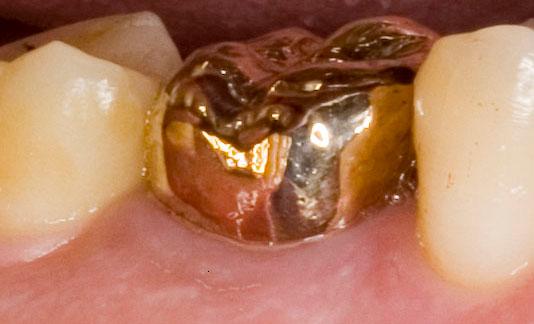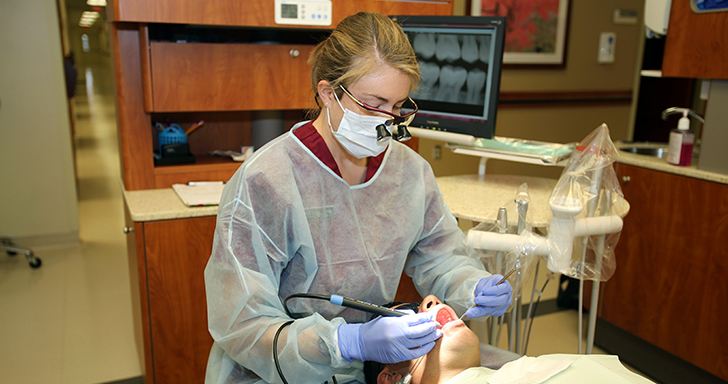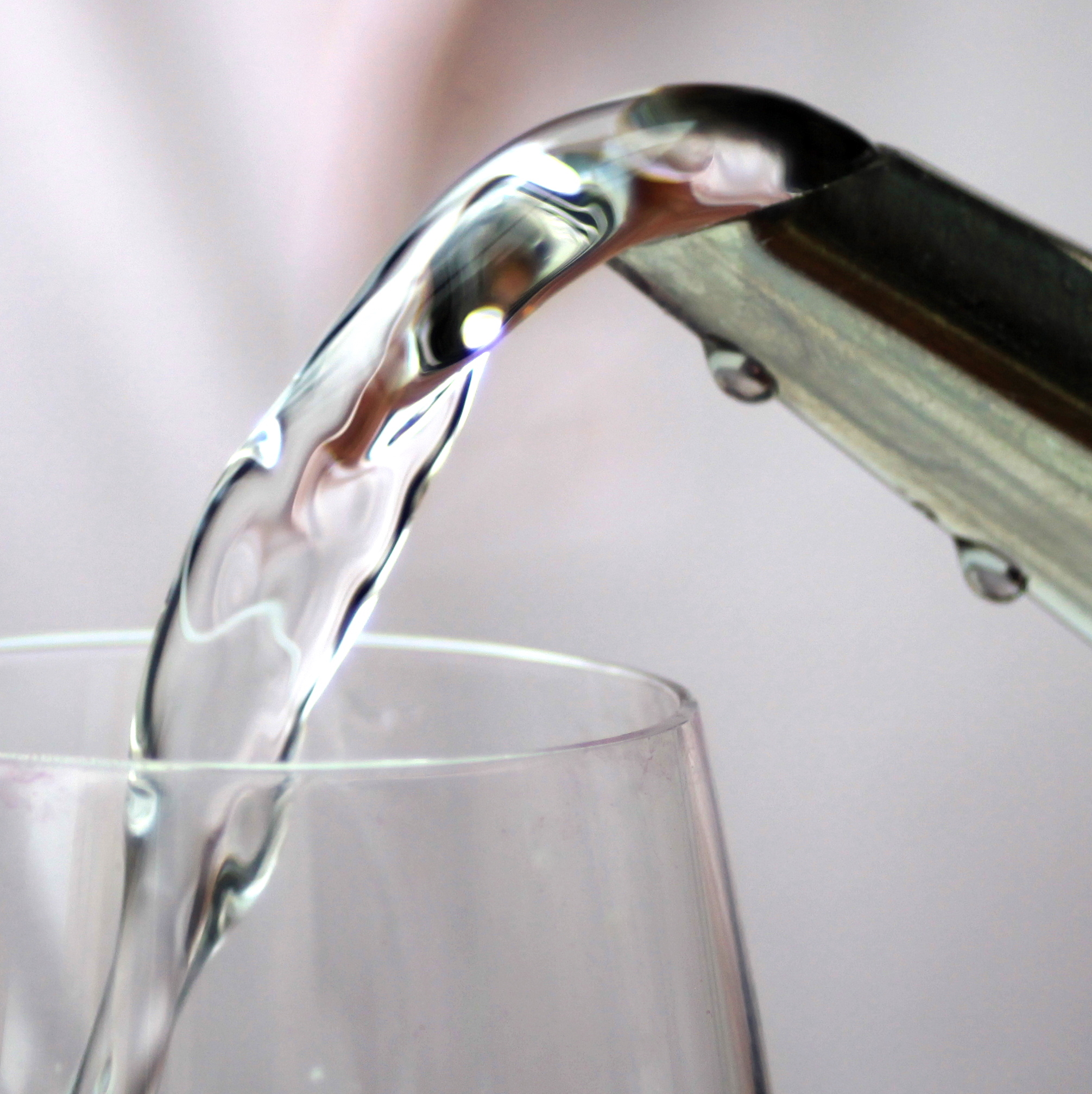|
Dentist
A dentist, also known as a dental surgeon, is a health care professional who specializes in dentistry (the diagnosis, prevention, management, and treatment of diseases and conditions of the oral cavity and other aspects of the craniofacial complex including the temporomandibular joint). The dentist's supporting team aids in providing oral health services. The dental team includes dental assistants, dental hygienists, dental technicians, and sometimes dental therapists. History Middle Ages In China as well as France, the first people to perform dentistry were barbers. They have been categorized into 2 distinct groups: guild of barbers and lay barbers. The first group, the Guild of Barbers, was created to distinguish more educated and qualified dental surgeons from lay barbers. Guild barbers were trained to do complex surgeries. The second group, the lay barbers, were qualified to perform regular hygienic services such as shaving and tooth extraction as well as basic sur ... [...More Info...] [...Related Items...] OR: [Wikipedia] [Google] [Baidu] |
Dentistry
Dentistry, also known as dental medicine and oral medicine, is the branch of medicine focused on the teeth, gums, and mouth. It consists of the study, diagnosis, prevention, management, and treatment of diseases, disorders, and conditions of the mouth, most commonly focused on dentition (the development and arrangement of teeth) as well as the oral mucosa. Dentistry may also encompass other aspects of the craniofacial complex including the temporomandibular joint. The practitioner is called a dentist. The history of dentistry is almost as ancient as the history of humanity and civilization with the earliest evidence dating from 7000 BC to 5500 BC. Dentistry is thought to have been the first specialization in medicine which have gone on to develop its own accredited degree with its own specializations. Dentistry is often also understood to subsume the now largely defunct medical specialty of stomatology (the study of the mouth and its disorders and diseases) for which reas ... [...More Info...] [...Related Items...] OR: [Wikipedia] [Google] [Baidu] |
Crown (dentistry)
In dentistry, a crown most commonly refers to a dental cap, a type of dental restoration that completely caps or encircles a tooth or dental implant. A crown may be needed when a large cavity threatens the health of a tooth. A crown is typically bonded to the tooth by dental cement. They can be made from various materials, which are usually fabricated using ''indirect methods''. Crowns are used to improve the strength or appearance of teeth and to halt deterioration. While beneficial to dental health, the procedure and materials can be costly. The most common method of crowning a tooth involves taking a dental impression of a tooth prepared by a dentist, then fabricating the crown outside of the mouth. The crown can then be inserted at a subsequent dental appointment. This ''indirect method'' of tooth restoration allows use of strong restorative material requiring time-consuming fabrication under intense heat, such as casting metal or firing porcelain, that would not be possi ... [...More Info...] [...Related Items...] OR: [Wikipedia] [Google] [Baidu] |
Crown (dentistry)
In dentistry, a crown most commonly refers to a dental cap, a type of dental restoration that completely caps or encircles a tooth or dental implant. A crown may be needed when a large cavity threatens the health of a tooth. A crown is typically bonded to the tooth by dental cement. They can be made from various materials, which are usually fabricated using ''indirect methods''. Crowns are used to improve the strength or appearance of teeth and to halt deterioration. While beneficial to dental health, the procedure and materials can be costly. The most common method of crowning a tooth involves taking a dental impression of a tooth prepared by a dentist, then fabricating the crown outside of the mouth. The crown can then be inserted at a subsequent dental appointment. This ''indirect method'' of tooth restoration allows use of strong restorative material requiring time-consuming fabrication under intense heat, such as casting metal or firing porcelain, that would not be possi ... [...More Info...] [...Related Items...] OR: [Wikipedia] [Google] [Baidu] |
Lucy Hobbs Taylor
Lucy Hobbs Taylor (March 14, 1833 – October 3, 1910) was an American school teacher and a dentist, known for being the first woman to graduate from dental school (Ohio College of Dental Surgery in 1866). She was originally denied admittance to the Eclectic Medical College in Cincinnati, Ohio owing to her gender. Due to this, a professor in the college agreed to tutor her and encouraged her to practice dentistry. Once again, she applied to a dentistry school, this time Ohio College of Dentistry. She was once again refused admittance due to her gender. From there, a college graduate agreed to tutor her, allowing her to continue her studies towards dentistry. In 1861, she decided to open her own practice instead of attempting to get into a college once again. After a year, she moved to Iowa and opened a dentistry practice. This allowed her to be accepted as a dentist without the diploma and become part of the Iowa State Dental Society. As part of this she was also serving as t ... [...More Info...] [...Related Items...] OR: [Wikipedia] [Google] [Baidu] |
Pierre Fauchard
Pierre Fauchard (January 2, 1679 – March 21, 1761) was a French physician, credited as being the "father of modern dentistry". He is widely known for writing the first complete scientific description of dentistry, ''Le Chirurgien Dentiste'' (''"The Surgeon Dentist"''), published in 1728. The book described basic oral anatomy and function, signs and symptoms of oral pathology, operative methods for removing decay and restoring teeth, periodontal disease (pyorrhea), orthodontics, replacement of missing teeth, and tooth transplantation. Biography Early years Fauchard was born in a very modest home in Saint-Denis-de-Gastines in 1679. In 1693 he joined the French Royal Navy at the age of 15, much to his family's distress, and came under the influence of Alexander Poteleret, a surgeon major, who had spent considerable time studying diseases of the teeth and mouth. During that time, Fauchard learned that sailors who were on long voyages suffered severely from dental ailments, sc ... [...More Info...] [...Related Items...] OR: [Wikipedia] [Google] [Baidu] |
Dental Hygienist
A dental hygienist or oral hygienist is a licensed dental professional, registered with a dental association or regulatory body within their country of practice. Prior to completing clinical and written board examinations, registered dental hygienists must have either an associate's or bachelor's degree in dental hygiene from an accredited college or university. Once registered, hygienists are primary healthcare professionals who work independently of or alongside dentists and other dental professionals to provide full oral health care. They have the training and education that focus on and specialize in the prevention and treatment of many oral diseases. Dental hygienists have a specific scope of clinical procedures they provide to their patients. They assess a patient's condition in order to offer patient-specific preventive and educational services to promote and maintain good oral health. A major role of a dental hygienist is to perform periodontal therapy which includes things ... [...More Info...] [...Related Items...] OR: [Wikipedia] [Google] [Baidu] |
Dental Assistant
Dental assistants are members of the dental team. They support a dental operator (such as a dentist or other treating dental auxiliary) in providing more efficient dental treatment. ''Dental assistants'' are distinguished from other groups of dental auxiliaries (such as dental therapists, dental hygienists and dental technicians) by differing training, roles and patient scopes. History The first dental assistant C. Edmund Kells, a pioneering dentist operating from New Orleans, enlisted the first dental assistant. The dental field was initially dominated by males, but after this first addition of a female, it was then acceptable for women to seek dental treatment without their husbands. This led to dental assistants of that era also being known as "Ladies in Attendance". Thanks to the addition of women to dentistry, the profession flourished with more and more women seeking treatment and more patients overall receiving care. The first association It was not until almo ... [...More Info...] [...Related Items...] OR: [Wikipedia] [Google] [Baidu] |
Dental Implant
A dental implant (also known as an endosseous implant or fixture) is a prosthesis that interfaces with the bone of the jaw or skull to support a dental prosthesis such as a crown, bridge, denture, or facial prosthesis or to act as an orthodontic anchor. The basis for modern dental implants is a biologic process called osseointegration, in which materials such as titanium or zirconia form an intimate bond to bone. The implant fixture is first placed so that it is likely to osseointegrate, then a dental prosthetic is added. A variable amount of healing time is required for osseointegration before either the dental prosthetic (a tooth, bridge or denture) is attached to the implant or an abutment is placed which will hold a dental prosthetic/crown. Success or failure of implants depends on the health of the person receiving the treatment, drugs which affect the chances of osseointegration, and the health of the tissues in the mouth. The amount of stress that will be put on the ... [...More Info...] [...Related Items...] OR: [Wikipedia] [Google] [Baidu] |
Dental Restorations
Dental restoration, dental fillings, or simply fillings are treatments used to restore the function, integrity, and morphology of missing tooth structure resulting from caries or external trauma as well as to the replacement of such structure supported by dental implants. They are of two broad types—''direct'' and ''indirect''—and are further classified by location and size. A root canal filling, for example, is a restorative technique used to fill the space where the dental pulp normally resides. Tooth preparation Restoring a tooth to good form and function requires two steps: # preparing the tooth for placement of restorative material or materials, and # placement of these materials. The process of preparation usually involves cutting the tooth with a rotary dental handpiece and dental burrs, a dental laser, or though air abrasion to make space for the planned restorative materials and to remove any dental decay or portions of the tooth that are structurally unsound. ... [...More Info...] [...Related Items...] OR: [Wikipedia] [Google] [Baidu] |
Dentures
Dentures (also known as false teeth) are prosthetic devices constructed to replace missing teeth, and are supported by the surrounding soft and hard tissues of the oral cavity. Conventional dentures are removable ( removable partial denture or complete denture). However, there are many denture designs, some which rely on bonding or clasping onto teeth or dental implants (fixed prosthodontics). There are two main categories of dentures, the distinction being whether they are used to replace missing teeth on the mandibular arch or on the maxillary arch. Medical uses Dentures do not feel like real teeth, nor do they function like real teeth. Dentures can help people through: * Mastication or chewing ability is improved by replacing edentulous areas with denture teeth. * Aesthetics, because the presence of teeth gives a natural appearance to the face, and wearing a denture to replace missing teeth provides support for the lips and cheeks and corrects the collapsed appearance ... [...More Info...] [...Related Items...] OR: [Wikipedia] [Google] [Baidu] |
Dental Braces
Dental braces (also known as braces, orthodontic cases, or cases) are devices used in orthodontics that align and straighten teeth and help position them with regard to a person's bite, while also aiming to improve dental health. They are often used to correct underbites, as well as malocclusions, overbites, open bites, gaps, deep bites, cross bites, crooked teeth, and various other flaws of the teeth and jaw. Braces can be either cosmetic or structural. Dental braces are often used in conjunction with other orthodontic appliances to help widen the palate or jaws and to otherwise assist in shaping the teeth and jaws. Process The application of braces moves the teeth as a result of force and pressure on the teeth. There are traditionally four basic elements used: brackets, bonding material, arch wire, and ligature elastic (also called an “O-ring”). The teeth move when the arch wire puts pressure on the brackets and teeth. Sometimes springs or rubber bands are used to ... [...More Info...] [...Related Items...] OR: [Wikipedia] [Google] [Baidu] |
Water Fluoridation
Water fluoridation is the controlled adjustment of fluoride to a public water supply solely to reduce tooth decay. Fluoridated water contains fluoride at a level that is effective for preventing cavities; this can occur naturally or by adding fluoride. Fluoridated water operates on tooth surfaces: in the mouth, it creates low levels of fluoride in saliva, which reduces the rate at which tooth enamel demineralizes and increases the rate at which it remineralizes in the early stages of cavities. Typically a fluoridated compound is added to drinking water, a process that in the U.S. costs an average of about $ per person-year. Defluoridation is needed when the naturally occurring fluoride level exceeds recommended limits. In 2011, the World Health Organization suggested a level of fluoride from 0.5 to 1.5 mg/L (milligrams per litre), depending on climate, local environment, and other sources of fluoride. Bottled water typically has unknown fluoride levels. Tooth decay rem ... [...More Info...] [...Related Items...] OR: [Wikipedia] [Google] [Baidu] |









